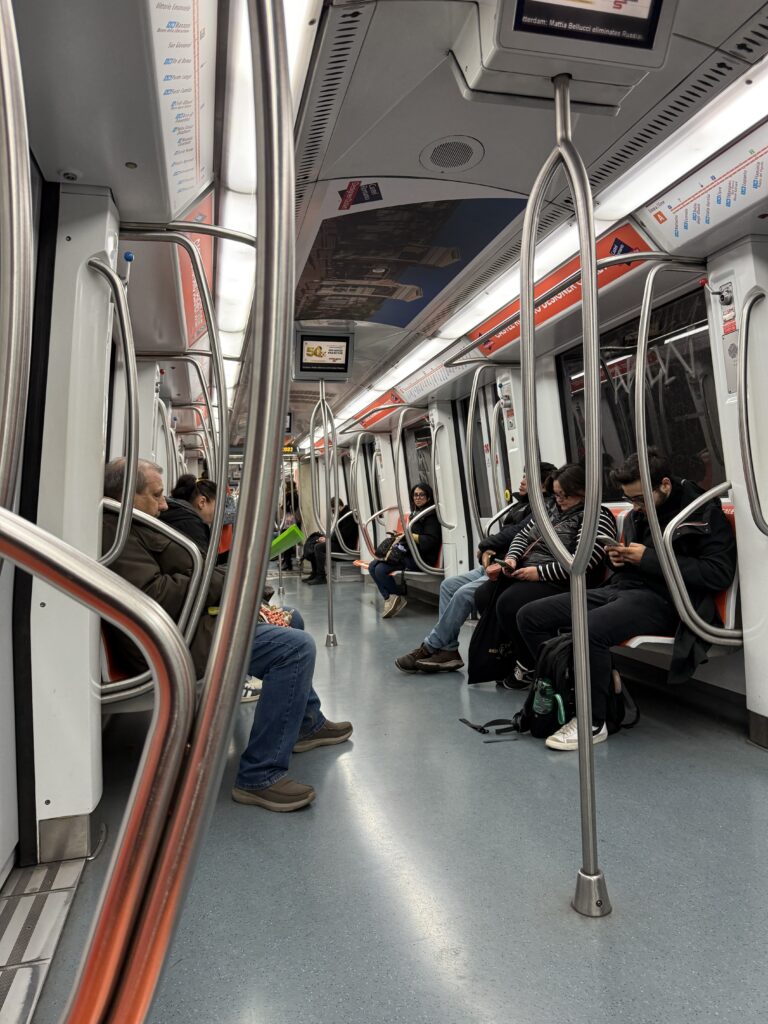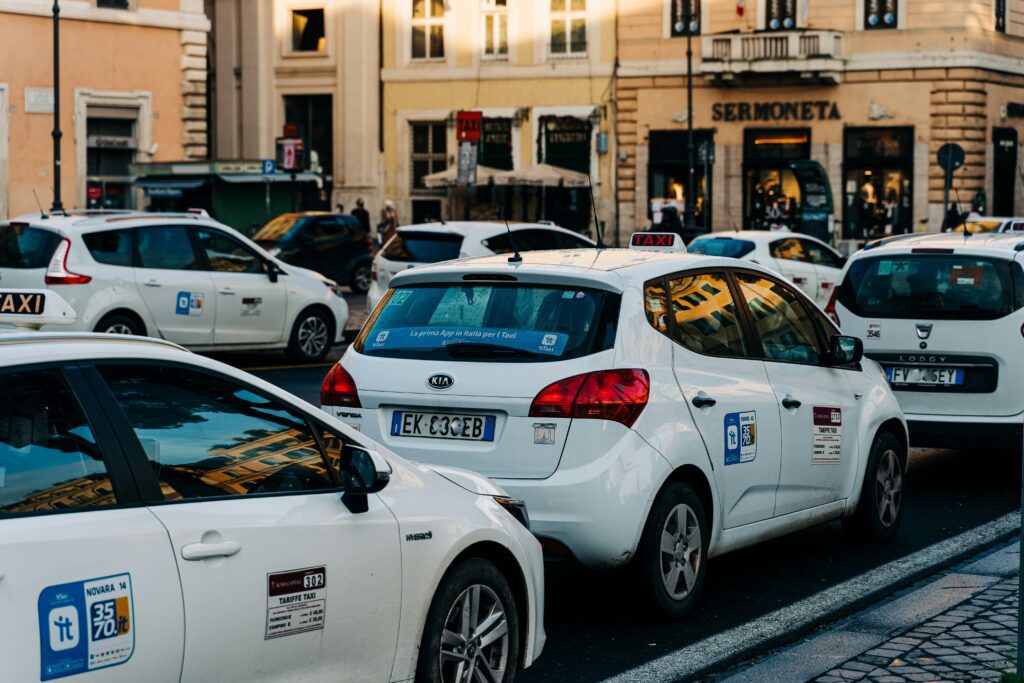How to Get Around in Rome: Guide to Public Transportation in Rome
Planning your trip to Rome last minute?
Make sure to book your e-sims, hotels, and activities in advance to ensure a smooth and enjoyable trip.
Top Recommendations to Book Before You Go:
✓ e-Sims:
✓ Best Hotels in Rome:
✓ Free Walking Tours of Rome:
✓ Car Rentals:
Need help planning your trip? Book a consultation here
Rome, with its ancient streets, grand piazzas, and incredible monuments, might feel like a place frozen in time—but don’t let its old-world charm fool you! The Eternal City has a surprisingly modern (albeit slightly chaotic) network of public transportation, taxis, and even electric bikes to help you navigate it all. Whether you’re planning to hop between landmarks, take a scenic tram ride, or zip off to a nearby beach, this guide will help you master getting around in Rome like a local. Here's everything you need to know about using public transportation in Rome:
Public Transportation In Rome

Rome’s public transportation is operated by ATAC, and it connects the city with an extensive (though occasionally unpredictable) web of metros, buses, trams, and trains. Once you know the basics, though, it’s a fantastic way to explore Rome without breaking the bank.
Metros:
Rome’s metro system isn’t as vast as other major European cities, but it does the job of connecting key landmarks. There are two main metro lines you need to know:
Metro A (Orange Line): This is the tourist’s dream line! It stops at must-visit spots like the Spanish Steps (Spagna), Trevi Fountain (Barberini), the Vatican Museums (Ottaviano), and the Basilica of St. John Lateran (San Giovanni).
Metro B (Blue Line): This line takes you to historical gems like the Colosseum (Colosseo), Circo Massimo, and the Mouth of Truth (Piramide).
Metro C (Green Line): Only half of Line C is functioning currently, as this is the newest line still under construction in Rome. You'll need this line if you're going to one of Rome's up and coming area- Pigneto for a fun night out.
Buses:
Rome’s buses crisscross the city, covering areas that metros and trams don’t reach. They’re especially useful in the city center, but there are a few things to keep in mind:
Always buy a ticket before boarding! There are frequent ticket checks, and fines start at €50 if you’re caught without one. I share more on buying tickets for Rome's public transportation below, so keep reading.
The schedules aren’t always reliable (let’s be real—buses can be late or not show up at all). Google Maps and Moovit are lifesavers here, as they’ll show live timings and alternative routes.
Trams:
Trams in Rome are often overlooked, but they’re a lovely way to see the city, especially if you’re exploring older, picturesque areas. These are the two trams that are relevant for tourists visiting the eternal city:
Tram 3: Runs from the Colosseum to the Trastevere train station, making it perfect for visiting one of Rome’s trendiest neighborhoods.
Tram 8: Connects Piazza Venezia to the heart of Trastevere, a great option for those heading to dinner or drinks in this lively district.
Trains:
Rome’s urban train network is limited, but it can be useful for specific routes. It connects the northern and southern parts of the city and can take you to nearby attractions like the seaside town of Ostia and Ostia Antica. For most tourists, though, trains are more for day trips, which I’ll cover later.
Buying Tickets for Rome's Public Transportation
How Much Does a Metro Ticket Cost in Rome?
A single ATAC ticket (what you'll need for the metro ride) costs €1.50 and is valid for 100 minutes. The same ticket lets you switch between buses, trams, and metros during that 100-minute window.
But remember: you can only take one metro ride per ticket, even within the 100 minutes.
Where to Buy Metro and Bus Tickets in Rome?
There are multiple ways to buy the €1.50 ATAC tickets for all of Rome's public transportation. Let me walk you through them below:
- Ticket Machines: Available at metro stations and select bus stops (but don’t rely on the ones at bus stops—they’re often out of order).
- Tabacchi Shops: Look for a shop with a big “T” sign outside; they’re everywhere in Rome.
- Apps like KintoGo: Buy tickets directly on your phone for added convenience.
- Tap & Go: If you have a contactless credit or debit card, you can simply tap it at the metro turnstiles or on buses.
Pro Tip: If you’re using Tap & Go, the system calculates your fare automatically. For one ride, it’s €1.50, but if you make multiple trips in a day, it caps the cost at the daily fare of €7.
Can Dogs Travel on the Public Transportation in Rome?
Yes, dogs are welcome on metros, trains, buses and trams in Rome. Make sure you have a muzzle and their health book with you, as those are required for traveling on any public transportation in Rome.
Taxis In Rome

Rome has plenty of taxis, and you’ll only find them at official taxi stands (or by using an app). Fares start higher than zero—here’s what to expect:
- Weekdays (6 AM–10 PM): €3 starting fare.
- Sundays and holidays (6 AM–10 PM): €4.50 starting fare.
- Nighttime (10 PM–6 AM): €6.50 starting fare.
To hail a taxi, I recommend using apps like FreeNow or ItTaxi, which let you book and pay directly through your phone.
Get 25% (up to € 5,00) off your 1st FREENOW trip when you use my referral code: lkm84569h. Not got the app yet? Download it here. Now you'll be wondering, but what about Uber?
Does Uber Work in Rome?
Yes, Uber works in Rome, but only Uber Black is available, which means higher-end cars and sometimes higher fares. While Uber also connects to local taxis, wait times for these rides are often longer. My advice? Use Uber Black for a more seamless experience, or stick to FreeNow and ItTaxi for regular taxis.
Electric Bikes and Scooters: Eco-Friendly and Fun
In recent years, electric bikes and scooters have become a popular way to zip through Rome’s streets. Companies like Lime, Dott, and Bird offer rental options for short trips. These are fantastic for cooler evenings or quieter times of day when traffic is lighter.
A few things to keep in mind:
- Drive on the roads, not the sidewalks—you can get fined for breaking this rule.
- Only one person per bike or scooter (no doubling up!).
- Prices vary by company, but many offer passes if you plan to use them frequently. Personally, I like Lime bikes because they feel more study and they offer a passes for those who plan to use the bikes frequently.
Regional Train Network in Italy

And if you're visiting Rome and have some time to squeeze in some fun and unusual day trips, you'll need to know about the regional train network in Italy. So here's an overview:
Regional Trains: Ideal for exploring nearby spots like Castelli Romani or seaside towns like Santa Marinella, Ladispoli, or Fiumicino. You can book tickets for these through the Trenitalia app or through Omio to compare the best prices and timings suitable for you. Alternatively, you can also purchase the tickets from the ticket machines at the train station, but I don't recommend this as you could find lines at the machines.
High-Speed Trains: For longer trips to cities like Florence, Naples, Venice, or Milan, hop on the high-speed trains operated by Trenitalia or Italo. I love Omio for comparing the times and prices of both companies before booking for the best deals.
Pro Tip: If you’re booking in advance, check Italo for deals—I’ve snagged round-trip tickets to Florence for as little as €30!
How to Find the Best Routes In Rome
Navigating Rome can feel like a maze, but apps like Google Maps, Moovit, and CityMapper make it a breeze. My personal favorite is Moovit—it gives live updates for bus timings, which is a godsend when dealing with Rome’s notoriously late buses.
Final Tips for Getting Around Rome
- Always validate your ticket when using public transport! Look for the little yellow machines on buses, trams, or at the metro turnstiles.
- Avoid driving in Rome unless you’re extremely confident—it’s chaotic, parking is scarce, and the ZTL (restricted traffic zones) can land you a hefty fine.
- Wear comfy shoes! Even with public transport, you’ll do a lot of walking—Rome’s beauty is best appreciated on foot.
With this guide in hand (and these apps downloaded!), you’re ready to tackle Rome like a seasoned traveler. Buon viaggio!